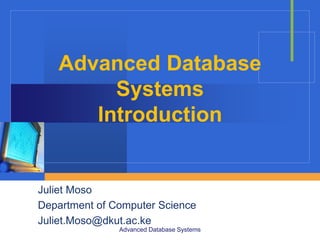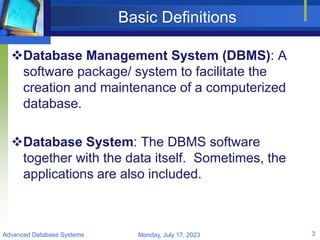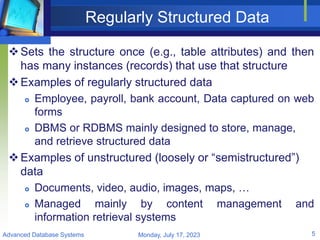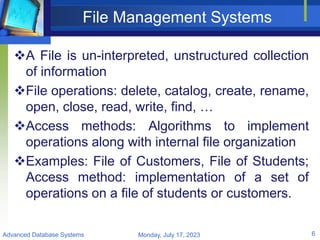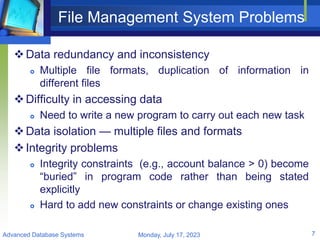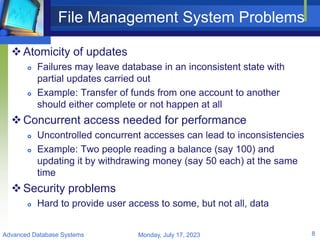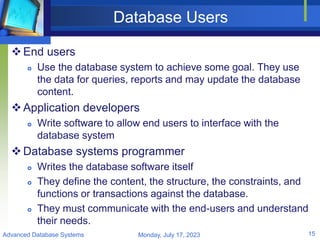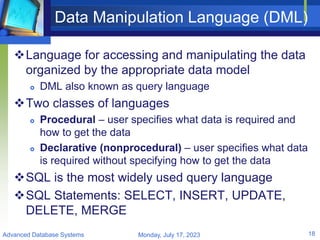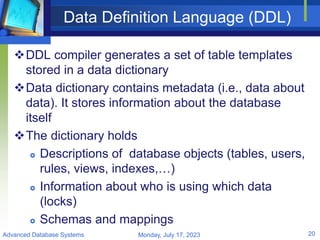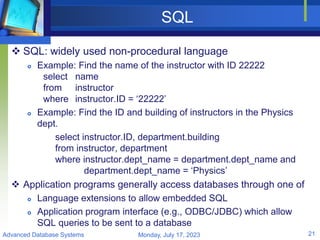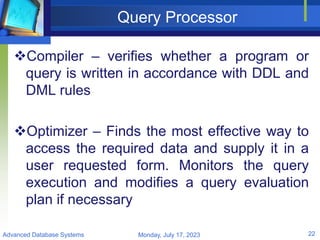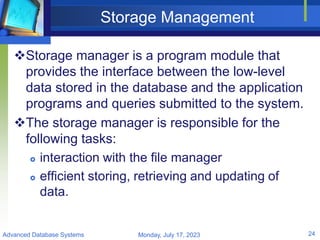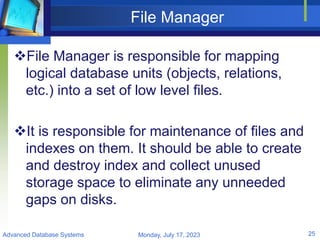The document provides an introduction to advanced database systems, including basic definitions such as database, data, information, metadata, and database management system. It describes the typical components and functionality of a database management system, including data models, data manipulation languages, data definition languages, storage management, transaction management, and more. The document also discusses database users, advantages of databases, SQL, the query processor, and database architecture types.
